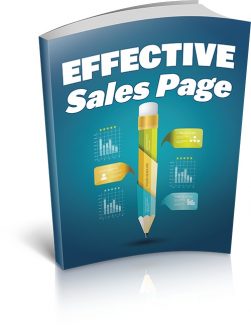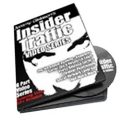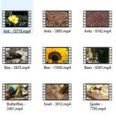 License Type: Master Resell Rights
License Type: Master Resell Rights  File Type: ZIP
File Type: ZIP
 SKU: 62671
SKU: 62671  Shipping: Online Download
Shipping: Online Download
Sample Content Preview
WELCOME
In this report, we’re going to take a closer look at something that is absolutely basic and fundamental to success as an Internet marketer. However, it’s also the one thing that is most prone to mistakes and missteps that, in the end, lead to lost sales and reduced profits.
You already know that the sales page is your biggest Internet marketing asset. It is where visitors land to find out more about your product, make their buying decision, and then make their purchase right away. Sounds pretty easy, right?
Yes, it is pretty easy to construct an effective sales page if you know the following:
• What elements to include
• In what order to include them
• How to format them for maximum impact
You can do a simple Google search and find all sorts of people out there offering their advice and suggestions for creating a high quality sales page. If you were to buy all of their information products, read all of their articles, and capture their overall main ideas, what you would most likely find is a hodgepodge of ideas and descriptions.
What we’re going to do here is take this hodgepodge of ideas and descriptions and put some order to it. You might be able to argue with the names and titles we give to certain elements, but you certainly will not be able to argue with the effectiveness and accuracy of what’s presented here.
If you’re reading this report, then you’re already well on your way to creating a powerful sales page that generates huge sales and profits. Why? Because you’re now armed with the valuable information necessary to create that kind of success.
#1 –THE HEADLINE
Think about the last time you read through a newspaper, magazine, or some other printed periodical. How do you decide which articles to read and which articles to skip? The headline. If the headline doesn’t grab you right away, engaging your interest and curiosity, then you’ll most likely move on without checking out the article at all.
The same concept holds true for your sales page; a great headline is absolutely vital to getting visitors to stick around and keep reading. Newspapers often use a main headline and a sub-headline to enhance the likelihood that you’ll stop to read an article. On an Internet sales page, though, you need to use three different headlines:
• The “Gotcha” Headline
• The Main Headline
• The “Still Gotcha” Headline.
Each of these has a very specific purpose and must be used in a very specific way if you want to produce maximum results.
THE “GOTCHA” HEADLINE
This is the first headline the visitor reads, located at the very top of the sales page. It doesn’t need to be huge in size or long in length. What it does need to do, though, is grab the attention of the specific prospects you’re going after. So, you’d write it one way if your main prospects are teenagers, for example, but write it in a completely different way if your main prospects are senior citizens.
THE MAIN HEADLINE
This is the most important headline on the whole page because it is the largest, the most eye-catching, and the most concise description of the product’s biggest benefit to the prospect. It needs to literally jump off the page at the reader in a size that’s too big to ignore. Most importantly, though, is the emotional reaction this headline creates in your prospects. If you can capture them emotionally, then you’re well on your way to converting them from prospects to sales.
THE “STILL GOTCHA” HEADLINE
Lots of sales pages don’t use this third headline and that’s a big mistake. Why? Because this type of headline serves to reinforce the message communicated in the main headline and clarifies for the prospect exactly what benefit or advantage they can expect to gain from making a purchase.
One of the biggest mistakes when it comes to any of these headlines is to use too many words and make it too long. Remember, just a few really powerful words will be exponentially more effective for you than a lot of words strung together in a long, drawn-out explanation.
#2 –THE OPENING ACT
Playwrights use the opening act to introduce their audience to the basic concept of their story, bringing in the setting, the characters, and the like in a way that grabs the audience’s emotions and attention. It is a vital part of the play because without it, the audience would quickly get lost; they would have no idea of who the characters are and what they are doing there.








